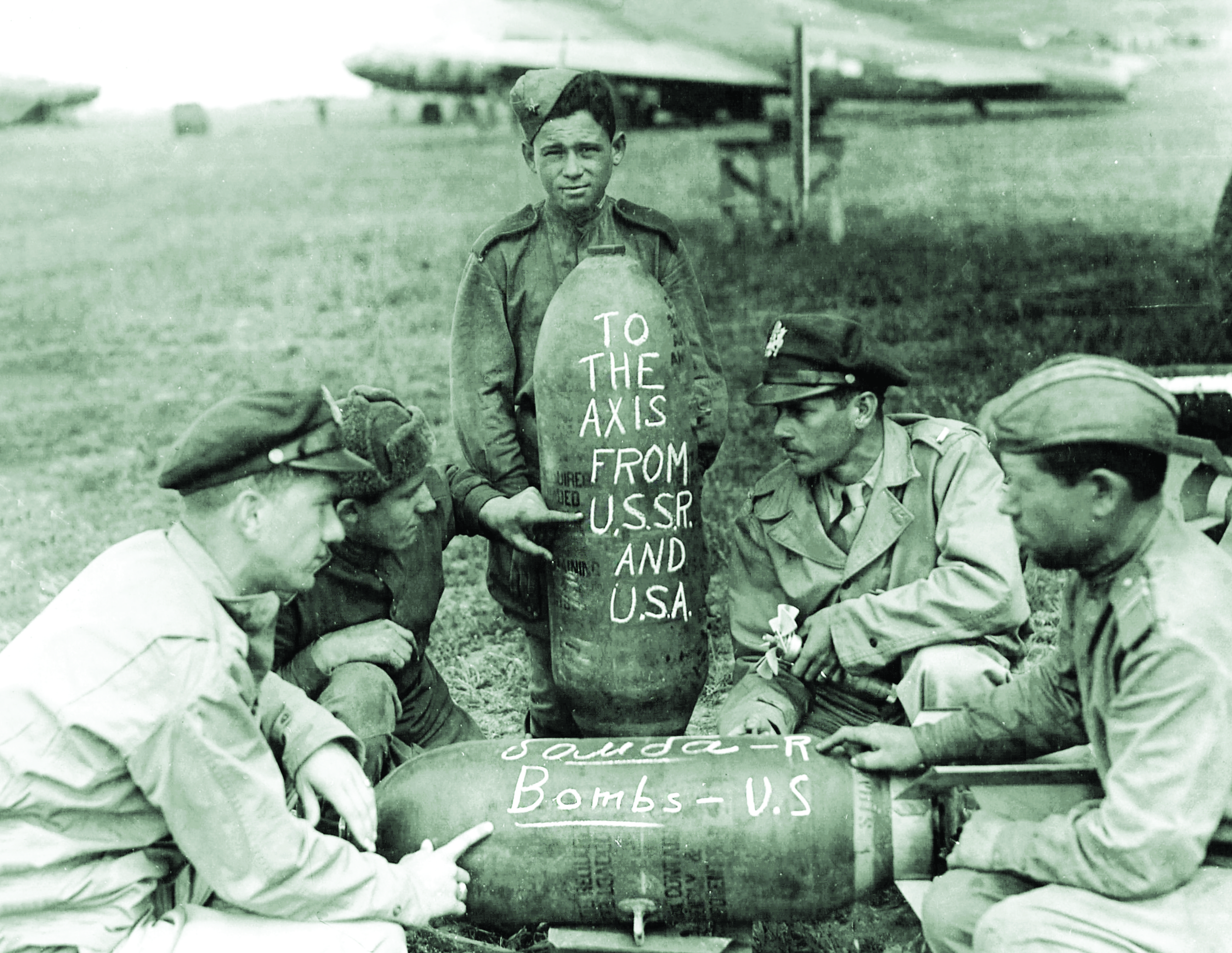A new book explores the unraveling of a once-promising military alliance between the Soviet Union and the U.S.
Forgotten Bastards of the Eastern Front: American Airmen Behind the Soviet Lines and the Collapse of the Grand Alliance.
Serhii Plokhy. 360 pp.
Oxford University, 2019. $29.95.
Behind the glittering façade of the Grand Alliance—the World War II-era union between the Soviet Union, the United States, and the United Kingdom—lurked a complex web of international friction, misunderstanding, ideological incompatibility, and suspicion. Relations between the U.S. and the Soviet Union were particularly fraught. Despite this inhospitable diplomatic climate, American air planners still managed to develop a 1944-45 program that would shuttle long-range bombers between bases in England or Italy and three airfields in Ukraine.
These American air bases on Soviet territory, stocked with fuel and bombs, would serve as pivot points for strikes against German targets on both legs of the journey to and from the home bases, thereby offering the hope of another strategic air front against the Reich (and eventually Imperial Japan)—a hope that ultimately foundered. While a German air raid on the Ukrainian airfield at Poltava in June 1944 dealt the program a severe blow, deep fault lines within the coalition probably contributed more to its ultimate failure. In Forgotten Bastards of the Eastern Front, Serhii Plokhy, a professor of Ukrainian history at Harvard University, has crafted the first truly multinational history of this ambitious yet doomed effort.
Operation Frantic, as the shuttle program was known, has attracted its share of historical attention. The U.S. Army Air Forces produced a number of detailed official studies, and some Cold War-era authors trafficked in wild conspiracy theories, even suggesting that the Soviets themselves orchestrated the strike on Poltava.
Mark J. Conversino’s 1997 work Fighting with the Soviets remains the definitive work on the program’s American aspects. But what has been missing, until now, is an in-depth look at the Soviet side.
Plokhy leverages all of this earlier work and incorporates the fruits of what he calls “an archival revolution”—access to previously unavailable records from the Soviet secret service. Agents were in place at the air bases from the beginning—first, observing arriving B-17s to make sure that no spies accompanied the crew, then engaging in meticulous record keeping, agitation, and intimidation.
Plokhy emphasizes the experiences of U.S. military personnel with Russian or Ukrainian backgrounds who were stationed at the Poltava base complex. (The other bases were in Mirgorod and Piryatin—all in central Ukraine.) Many of these Americans harbored strong attachments to their “mother country” while nonetheless rejecting Stalinist terror. Using the KGB files, Plokhy recounts how Soviet counterintelligence regarded such men as harboring “anti-Soviet attitudes.” The agents kept especially strict tabs on these individuals, transcribed their supposedly incriminating conversations, and harassed their Ukrainian female acquaintances. Plokhy skillfully weaves these vignettes into a larger tale, describing how the “warm glow and postwar hopes” engendered by the first successful shuttle mission degenerated into mistrust, disingenuous political maneuvering, and even physical violence between U.S. and Soviet personnel at the Poltava base complex.
Even after the shuttle program collapsed, a small U.S. contingent remained at the Poltava base. These stay-behinds are the true “forgotten bastards” to whom the book’s title refers; few students of the war are aware that American personnel remained in the USSR more than a month after V-E Day. Plokhy shows how the shuttle experience cast a long shadow; Poltava veterans from both sides continued to play key roles in Cold War events such as the Berlin Airlift and the McCarthy “witch hunts.”
This excellent work does not neglect the national security concerns of the Big Three and other senior policymakers, but the narrative is at its finest while focusing on the individual soldiers. Fittingly, Plokhy gives the last word to a humble American private, Palmer Myrha, who recalled, “I truly believe that we who were at the Soviet air bases in the 1944 days of the hot war really did witness the very beginning of the coming Cold War.”
—Richard R. Muller teaches military history at the School of Advanced Air and Space Studies, Maxwell Air Force Base, Alabama. ✯
This article was published in the April 2020 issue of World War II.





